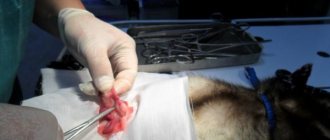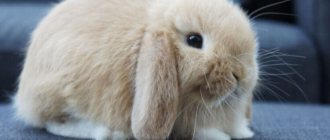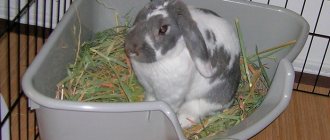When should you toilet train your ferret?
Toilet training for ferrets begins from the minute he gets into your home. If this is not done right away, then in the future the process will become much more complicated, since the animal will already understand that it is normal to shit in any place.
The behavior of ferrets is in many ways reminiscent of a cat's, not a dog's, therefore raising the voice, corporal punishment and other methods of training dogs are prohibited. Do not forget that ferrets are very shy, so at the time of training it should be quiet and calm and, what is important, without the presence of strangers.
Why does a ferret ignore the litter box?
There are situations when a trained pet goes to the toilet in the wrong place. The reason could be:
- Dirty tray. This is where you need to think about cleaning more often.
- Incorrect container size or filler type. In this case, you will need to change the litter box and its contents to suit your ferret's needs.
Sometimes the aggressive behavior of an adult animal is associated with stress from movement. Therefore, when you change your place of residence, it may be necessary to start the waste training process all over again by determining the number and location of toilet containers.
Features of training
There are some nuances that you need to pay special attention to when training to use a tray:
- It is unlikely that the ferret will go to the right place in a completely new tray - it is best to lightly coat it with feces of the same animal;
- You shouldn’t accustom a rodent to a cat’s litter box, as the other one will react aggressively (while ferrets are not disgusted);
- if the animal lives in a house (without a cage), then you will need several trays (at least for the first time);
- never place the toilet in areas where the animal sleeps and feeds;
- Females are the easiest to train to the tray;
- do not take radical measures if the animal uses the tray 80-90% of all times it goes to the toilet, and the remaining percentage is spent defecating in the wrong place;
- keep the toilet clean, as ferrets are too clean;
- try to place the tray in the room in which the animal is most often, since ferrets have too fast digestion and will not waste time going to the toilet in the back room.
Common mistakes
The main mistake beginners make is overestimating demands on their pet. Teaching a ferret to go to the toilet in a designated place and weaning it from soiling in corners is very important, but not always possible. This does not mean that the owner should immediately give up, but sometimes you have to put up with the daily cleaning of “evidence”.
Another mistake is not maintaining cleanliness. If litter is not used in the tray, it must be washed after each visit by the animal. Beginning owners think that the animal will find the toilet easier by smell, but this is not so. The ferret will not go into a dirty litter box. And he smells it even after cleaning his toilet. If a special filler is used, then it is necessary to restore order as it becomes dirty.
It can be considered a mistake to walk freely around the apartment until he gets used to the tray in the cage. Before setting out to explore new territories, the pet must become well accustomed to its cage and get used to going to the toilet. Otherwise, it simply will not understand later what you want from it.
Requirements for trays and filler
Inexperienced ferret breeders believe that the most important thing for ferrets is the choice of litter, but in reality a lot depends on the litter box. Please pay attention to the requirements for the frying container:
- the size of the tray must correspond to the age and parameters of the rodent - the older it is, the larger the container is needed;
- the best option is trays with mesh so that the animal’s paws do not come into contact with the filler;
- the height of the toilet depends on the length of the ferret’s paws, so the animal should easily jump over the sides (if it is difficult for him to climb over, he will relieve himself nearby or in other places);
- If your ferret sits in a cage and runs around the apartment, then buy identical trays.
There are also special requirements for the filler. It should be:
- from natural ingredients;
- hypoallergenic, since ferrets often have an allergic reaction;
- with excellent absorbent properties;
- quickly absorbs urine and destroys unpleasant “odors”;
- high-quality, from trusted manufacturers and designed specifically for ferrets, not cats;
- without insects and pests, which is possible when purchasing loose goods.
Punishment and reward
If an animal leaves something where it is not supposed to, there is no need to poke its nose like a cat. Furos have a sensitive sense of smell, this can only cause harm. In order to punish him, you can shake him a little by the withers, but only immediately after he has done something wrong. You can express your displeasure by loudly clapping your hands or stomping your feet. Furo, sensing the owner’s dissatisfaction, will try to rectify the situation.
Members of the mustelid family have a good memory, so a reward system is a great way to stop your ferret from crapping. Every time your pet relieves itself where it is supposed to, immediately treat it with a treat . It is important to do this right away.
In addition to treats, you need to pet the ferret and talk to her in a gentle voice after each bowel movement in the designated area.
Types of trays
All trays are not suitable for ferrets, as they are selective in their choice, and some models do not meet the requirements for containers for ferrets. Therefore, carefully study all types of trays, their pros and cons, and features.
Rectangular with mesh
Such designs are most often used for cats. They can have different side heights. Experts recommend just such models, since the mesh does not allow the swollen litter to be pulled around the house or cage.
Advantages of rectangular mesh trays for ferrets:
- urinary fluid flows to the bottom, and the mesh always remains dry, which meets animal hygiene standards;
- one mesh can be used for both puppyhood and an already matured animal, the main thing is to choose the size of the mesh and trays with different side heights;
- easy to clean as the trays are made of plastic;
- relatively inexpensive cost - average from 200 to 400 rubles;
- saving of filler - it does not need to be changed often, since it does not come into contact with the rodent’s paws;
- safety of use - ferrets will not be able to get the filler from inside, which they often eat.
There are also disadvantages:
- the need to frequently wash the mesh if the tray has filling, but if there is nothing inside, then you will have to wash the entire tray 1-2 times a day;
- sometimes ferrets stubbornly refuse to stand on the mesh surface;
- The most budget models are of poor quality and therefore crack easily.
Trays with fillers and removable frames
These are structures consisting of a pallet and removable upper sides, into which filler is poured. It is also made of plastic, which can be of high quality or not.
Pros:
- when using litter, the upper frame does not allow it to spill out, even if the ferret tries to turn the tray over;
- You can use a regular diaper as a filler, which is removed after bowel movement;
- it is possible to buy a model with a mesh;
- average cost - from 200 to 600 rubles.
There are also disadvantages:
- the filler remains on the rodent’s paws;
- the need to frequently change materials;
- cannot be used for puppies, as the models have very high sides.
Corner models
They are also considered an excellent option, since the design is a triangular-shaped body (ferrets love to defecate in corners) with sides of different heights (lower in front, higher in back), so it can be used for any age category of rodent.
Advantages of corner models:
- you can buy an option with or without a mesh, with removable sides;
- easily placed in the corner area of the cage and room;
- saves space;
- It is possible to add filler, place diapers and paper.
Among the disadvantages the following are noted:
- high cost - from 500 rubles;
- If you don’t use a mesh, then you need to change the filler often, and on the feet it will spread throughout the apartment.
Reviews
Vasilisa, Brest
I have two ferrets - a boy and a girl. The female quickly got used to the toilet without any problems. The male can shit under the bed or under the closet.
I do this: I feed him strictly in the crate, and only let him out for a walk when he goes to the toilet. Periodically I catch him and sit him on the tray for 10-15 minutes. No matter how much I fought with him, it was all useless. It’s better to accept it and just watch the animal.
Verent, Goose Crystal
I punished my ferret for his misbehavior. He swore, and then took it to the tray, showing where the right place was. Most often they realize that they have done something wrong and are being punished.
After sleep, you need to immediately put them on the tray, since the first thing they do is go to the toilet. Keep him there until he does his job. He defecated, praise him, give him a treat.
I want to warn you right away that the process is long and requires special patience, but in the end you will get a positive result. When the ferret learns, he goes to the litter box without any problems. But this doesn't mean you can relax. You will still have to constantly watch him, as these animals love to cause mischief.
Roman, Vladivostok
When my Ferret went to the toilet in the wrong place, I took his feces, put it on the tray, and then put the animal there. Then I began to watch him and realized that if an animal starts to fuss, it means it wants to go to the toilet. After several such manipulations, everything became normal, he walks where he should. Sometimes, of course, he misses, but here you need to keep an eye on him.
Types of filler
Ferret litter can only be used of high quality, which meets the basic requirements, so there are not many types of it for these rodents.
Clumping material
This filler forms lumps, as it has increased hygroscopicity. Clumping occurs after wetting, swelling and gluing of the granules together. It often absorbs odors very well. The cost per 1 kg varies from 5 to 20 rubles, depending on the manufacturer.
Peculiarities:
- Material of manufacture. It could be: mineral (concrete) – it clumps well, but does not absorb odors;
- soy - copes well with the task;
- silica gel (synthetic polysilicic acid) is the most expensive option with high rates of clumping and absorption of odors for a long time.
General benefits:
- hygroscopicity easily copes with a humid environment;
- economy - just remove the lumps and leave the rest of the filler for later use;
- simplicity and speed of cleaning;
- Animals love these pellets.
Flaws:
- not every clumping litter absorbs unpleasant odors;
- can be carried into the house (mineral on the paws, woody on the fur, and the light one flies out of the tray).
There are rules for using fillers of this type:
- the minimum layer of granules is from 5-6 cm (if less, the clumping properties worsen);
- the tray must have high sides;
- It is forbidden to pour into a wet tray;
- For cleaning, a special spatula is used, which has holes for the size of the granules;
- complete replacement is carried out once every 25-30 days, and granules need to be refilled frequently;
- It is optimal to use large granules, since too small ones easily penetrate the ferret's respiratory tract.
Dispose of clumping litter only in the trash – even wood material.
Wood option
This is a natural material, but when choosing it specifically for ferrets, the wood used is taken into account. For example, rodents are allergic to pine needles because they contain a lot of essential oils.
There are 2 types - clumping (as described above) and absorbent. The second option has a cost for a volume of 5 liters from 140 rubles.
Brief description of absorbent wood filler:
- granules of different sizes, suitable for different ages;
- in production, wood dust and shavings are used, which are pressed into granules;
- There are options with and without flavorings.
Pros:
- rapid absorption of urine and neutralization of odor;
- hypoallergenic materials (if you do not use pine needles);
- environmental friendliness;
- no synthetic additives;
- antiseptic properties;
- ease of disposal - in the trash can, toilet.
Minuses:
- swollen granules are easily spread by animals throughout the apartment (if you do not use a net);
- Frequent updates of material (every 2-4 days).
How to use - rules:
- the granules should be poured to a depth of 2-3 cm;
- with a mesh tray - 1 cm;
- Be sure to remove hardened feces after each bowel movement;
- the composition is completely replaced when an unpleasant “aroma” is formed;
- A mandatory requirement is to wash the tray with soap.
Plant raw materials
This category of fillers includes:
- hay;
- sawdust;
- chopped corn.
On the one hand, plant fillers have the following advantages:
- naturalness;
- low cost (depending on the manufacturer, seller, type of filler, etc.);
- pleasant aroma;
- hypoallergenic (if the ferret is not allergic to meadow grass in the hay);
- cost-effectiveness;
- no fragrances.
On the other hand, there are many disadvantages, and those that are the main ones for the failure of a plant filler:
- do not absorb urine;
- spread throughout the apartment;
- spread of bacteria and infections;
- ferrets can eat, which will cause harm if the ferret defecates in the litter;
- Sometimes you come across rotted materials.
Usage comes down to 2 points:
- need to be replaced every day or more often;
- should be poured in a thin layer.
Warnings
- Using clumping clay litter can cause intestinal blockage, discomfort, and even death for your pet. The pet can inhale the litter when there is company in it (which is natural for ferrets). When interacting with moisture, a lump of filler forms in the respiratory tract, which can lead to death. Clay and silicone litters stick to the ferret's butt, and inhaled dust from them can cause respiratory problems.
- It is not recommended to hit ferrets under any circumstances; you should not even lightly flick them on the nose.
- Changing the usual litter may require new litter training for the ferret. Mix the new litter into the old litter a little at a time over the course of a week to avoid this problem.
Training methods
The method of toilet training a ferret depends on the age of the animal. Be sure to take into account all the features.
Young ferret
They are the easiest to train, especially when they are just starting to emerge from their nest. Being blind, they have an excellent sense of smell, so they themselves are directed to the toilet (by smell), as well as to the feeder.
The mother's habituation plays an important role, since as the babies grow older, they exactly repeat the actions of the horiha. If the chicks are without a mother, do this:
- fill each corner of the cage with different objects - 1 feeder, 2 drinking bowl, 3 toilet, 4 toy;
- Bring your ferret to the tray immediately after sleep, a maximum of 5-10 minutes, but it’s better right away.
Adult
If an adult ferret is not accustomed to the litter box, then training her will be problematic. If you brought a ferret to a new home, then simply place the tray with its former feces in a certain place and show it to it.
In any case, there are special rules that must be followed:
- sit next to your pet until he goes to the toilet;
- be sure to praise him in the usual way;
- never scream or hit - he will get scared or angry, even to the point of biting.
Adviсe
- If you have multiple ferrets, you may need to use two litter boxes per cage and in each room. Some ferrets don't like to share.
- Don't let your ferret fool you by pretending he went to the toilet!
- Ferrets are attracted to the smell of places where they have already made a mistake. It acts like a mark, just like in other animals. Having gone to the toilet there once, the ferret will return there again and again if the smell is not eliminated, so it is very important to thoroughly clean the incident areas. There are many cleaning products available to remove urine odor from carpets and upholstered furniture.
- Ferrets are not perfect. After toilet training, they need to periodically reinforce this skill.
- Clean litter boxes regularly. Ferrets will not go to the toilet in a foul-smelling litter box.
- Ferrets are very picky. If they are used to using a specific type of litter box, it will take time to get them used to the new type of litter box.
- Choose your litter tray carefully! Pellets are less expensive, but some ferrets do not like the feel of them, especially if there is not enough litter in the tray (there should be a 2.5-5 cm layer). Soft, plant-based clumping cat litters are better because they control odor better and are more appealing to ferrets. Never use hard clumping litters, silicone-based litters or dusty cat litters (see warnings).
- Never clean cages with Lysol, it is toxic to ferrets.
Step-by-step training stages
The time it takes for a ferret to toilet train depends on various factors, so one animal may get used to it in 1-3 times, while another may take a month. If you do not know in what order to proceed, pay attention to the following instructions:
- Place the litter box in the cage as there is limited space.
- Cover it with your pet's feces.
- Show your rodent an area to defecate.
- If he doesn’t go there, then wait until he wakes up from sleep or gently wake him up.
- Pick it up and place it in the tray.
- Stroke him with your hand to make him feel calm.
- In a maximum of 15 minutes he will relieve himself.
- Praise the rodent and give it a treat.
To learn how to properly toilet train your ferrets, watch the video:
Preparation
So, if you decide to have this funny creature at home, be prepared for the fact that many not entirely pleasant surprises await you, such as, for example, bowel movements in the most inappropriate places. For example, it is much easier to train a cat to use a litter box than a ferret. Be patient, pay maximum attention to the animal, and you will be able to reach an agreement; the ferret will get used to you and will understand you.
Before you go shopping and before litter box training your ferret, you need to learn as much as possible about his habits, behavior, physiology and tastes. Each ferret is an individual, but ferrets are animals and they have common traits.
What to buy before getting a ferret
Before a ferret appears in the house, it is necessary to purchase a certain minimum of items to keep the animal.
Cell
Try to decide in advance whether you are going to keep your ferret in a cage most of the time or, on the contrary, it will only be needed occasionally: the type and parameters of the cage depend on this. For permanent maintenance, a large, spacious cage is required, preferably two or three tiers.
Nuances on the toilet
There are subtleties in raising ferrets that experienced breeders know about, but beginners cannot give a clear answer to a specific question.
How to stop shitting in the wrong place?
Such minor troubles happen not only during the first time of litter box training, but also in other cases. For example, a ferret can act out of spite if the owner has offended the animal. What to do in such a situation:
- be sure to treat the places where he shitted with antiseptics or chlorine-containing products;
- buy a special product in the store to attract you to the toilet or, conversely, scare it away;
- put food there.
How to stop marking?
The mating season for ferrets begins in February or March, so they begin to mark their territory, which results in a persistent unpleasant odor. This is typical not only for males, but also for females, who leave traces of urinary fluid and feces.
It is a priori impossible to wean him off this, since marks are a natural instinct of a rodent. Therefore, there is only one way out - castration and sterilization. In other cases, you will have to endure it or transplant it into a cage during the rut.
Why does a ferret ignore the litter box?
Ferrets may begin to ignore litter boxes even with good training and consistent elimination in the past. There are several reasons for this:
- I don’t like the aroma of the filler;
- the container is rarely washed or is of poor quality, so its walls have heavily absorbed substances from urine;
- other pets (cats or fellow ferrets) go into the litter box.
It’s easy to correct the situation - just replace the new filler with the one you used before, wash the tray thoroughly, or buy a new one. If this does not bring positive results, you will have to re-accustom the rodent to the toilet.
What to do if a ferret wanders by?
The movement of ferrets past the tray can be spontaneous, for example, when the animal was frightened by a sudden noise or simply did not have time to jump over the side. But there are situations in which the rodent begins to constantly miss. In this case, you need to closely monitor it and find out the reason for such a sudden change.
But regardless of the reason, do the following:
- Notice when your ferret becomes restless. Usually, owners know the signs when a pet wants to go to the toilet.
- Pick him up and place him in the tray. If he starts to jump out, hold him gently.
- Do this until he gets used to the tray again.
Reasons why he may walk by:
- the tray has become small - buy a new one;
- the animal has health problems, so it is difficult for him to jump over the side - replace it with a container with low sides;
- There is a lot of feces or urine accumulated inside - clean the trays.
Experienced breeders advise that when you see a rodent starting to sit down past the tray, gently tap your finger on the floor or wall - this way he will understand that he is doing wrong.
Ferret scatters litter - what to do?
This only happens when the animal does not like the filler (because it clings to its paws) or when the sides are too low. To correct the situation, you need to act according to the reason, that is, replace the filler or buy a new tray.
In order for your ferret to quickly learn to go to the toilet in the right place, follow the requirements for choosing a tray and filler, act with love and affection, and never use the carrot and stick method. But the main thing is to be patient and believe in the success of your plan.
0
0
Copy link
The ferret began to mark his territory
The mating season for ferrets begins around February-March. At this time, the males enter the rut and begin to mark the territory with urine marks. Females during estrus also leave urine and sometimes fecal marks on their territory, although in much smaller quantities.
Territory marking is not associated with urination. This is an instinct from which it is impossible to wean an animal in principle. If this behavior makes you uncomfortable and you do not plan to breed ferrets, your best option is to have the animal neutered.
Character and behavior of a ferret
Active, curious, capricious, even arrogant, and at the same time affectionate and charming - this is how you can characterize a ferret.
Like any animal, each ferret has its own individual character. Animals can be calm or more active and restless, cowardly and courageous, leaders and followers... A ferret can be devoted to only one person, or show sympathy for everyone without exception.
As breeders note, ferrets are a cross between a cat and a dog, i.e. in their character one can find traits of both “muroks” and “balls”. Like cats, ferrets have an independent character, but again, like cats, some animals can lie on their owner’s lap for hours. Many ferrets, like devoted dogs, get used to people; it is not difficult to teach them to respond to a name. Ferrets love to follow their owner and take an active part in all family activities. If there is a cat or dog at home, the animal may well make friends with them, and may even “build” four-legged animals, despite the significant difference in size.
Once you get to know ferrets better, you will discover a lot of features that are not characteristic of either cats or dogs, but are inherent to ferrets, and only to them.
Ferrets are on their own. They can learn commands and do what their owner wants them to do, but not always. This is prevented by natural curiosity. For example, if you are working with a ferret, and at that time he is interested in some foreign object, then the animal’s curiosity will take over and, forgetting about you, he will rush to where he is more interested.
The behavior and personality of a ferret depend to some extent on gender. Males, as a rule, are more attached to humans than females. It is easier to find a common language with them, they are more contactable and calmer. However, it is more difficult to raise male ferrets, since they are prone to “showdowns” and often try to take a dominant position. Girls are smarter and learn more easily, but at the same time show more independence. Their behavior is more restless.
Age also plays a significant role. Ferrets become relatively conscious by the age of 4 months - they are able to follow the rules established for them and understand the word “impossible.” At the same time, their character begins to clearly manifest themselves. And in the “teenage” age - from 4 to 8 months - their character blossoms in full force. The animals become impudent, easily break prohibitions and try their best to show people who is boss. Then the impudence gradually goes away, but the ferret's playfulness and tendency to mischief remain with him forever.
Of course, we cannot fail to mention the rutting period: wanting to reproduce, these animals sometimes become simply unbearable, very disobedient. At the same time, the male is ready to inseminate any soft toy in the house! It's not surprising that veterinarians recommend castrating choreas. This will make it easier for both them and the owners.
Prevention
A few tips on keeping and caring for a member of the mustelid family:
- Regular and thorough cleaning of the room/cage
- Regular ventilation of the room, while drafts must be avoided
- Keeping in small rooms or multi-tiered cages promotes rapid adaptation
When all the conditions of detention correspond to the norm, the pet feels comfortable and does not feel the need to take care of it somewhere. It is important that at the time of litter box training, the owner is nearby, carefully monitoring this process, encouraging or scolding the pet when appropriate.
How to raise a ferret at home?
Author Ekaterina Zhuravleva
03.11.2018 22:17
Zoosphere » Interesting
Everyone knows that ferrets are predators adapted to life in the wild, so it is worth understanding: the ferret must gradually get used to living in a house.
3 shared
After the conditions for the ferret to live in the house have been created, you should begin raising the animal, and this is work for which you need to be patient.
To begin with, it is important to understand the degree of socialization of the ferret: whether he is fearful, aggressive, or, on the contrary, indifferent to people. The ferret may already be accustomed to being handled - this is possible if it was purchased from a breeder
Such a ferret will get used to communicating with people more easily. But a ferret purchased from a pet store, market or farm may refuse to communicate. In such a situation, it sometimes takes weeks or even months to tame.
The best age for a ferret to bring home is two months. From four months old, the ferret is already an adult, he is formed, and teaching him new things is much more difficult. It happens that adult ferrets cannot be retrained.
In order to start accustoming your ferret to your hands, it is worth purchasing thick gloves: ferrets bite painfully. Wearing gloves, you need to slowly bring a piece of treat to the ferret and wait until he comes up to take it. Patience and calm are required, because one sudden movement will cost the failure of the operation, and the ferret will get used to it even longer. After the ferret gets used to taking pieces of food from your hands, you should start hand-feeding, and after that try petting the ferret. This must be done very carefully and gently, do not pick up the ferret or grab it. After several stages of training, you can stop using gloves, feed from the palm of your hand and pet them just like that.
The first step to starting to pick up your ferret is to interact with the sleeping animal. You need to hold him in your arms when he sleeps. Ferrets sleep so deeply that the pet will not notice the action. When the ferret wakes up, he will understand that there is no danger in the hands of the owner.
It is worth considering that a ferret can bite even after it has become accustomed to hands: it will do this during play, or in a fit of stubbornness when it is disturbed. Grown-up ferrets also bite to show their authority. Bad ferret behavior should be stopped immediately.
A ferret can and should be trained to its name. To do this, you need to pronounce its name during any action addressed to the animal. The name itself should be short and sonorous. It is best not to change a name after one has already been thought of, and also not to use a diminutive form, so as not to confuse the ferret.
Another important and difficult point is training a ferret to use a litter tray. You should start doing this in a cage where you need to place a tray and bowls for food and water. If the ferret is already accustomed to the tray (this happens when purchased from a breeder), then you just need to buy a similar tray and the same filler to which the animal is accustomed. If it is not trained, then every time the pet is about to go to the toilet (this can be seen from its posture), you need to transfer it to the tray. After training him to use a litter box in a crate, you can begin training him to use a litter box in a room. Ferrets often choose several places in a room, so several litter trays may be needed.
Raising a ferret requires patience, gentleness, perseverance, and love for the animal. Like any other animal, a ferret should not be hit. These animals have very fragile bones, and even one click on the nose can break the septum, which leads to death. It is worth remembering that ferrets are genetically inclined to replenish their reserves, so education cannot eradicate his habit of dragging into the “hole” a variety of objects that he finds in the house. The only thing that can be done is to bring complete order to the apartment.
Photo: wallpapersafari.com
Free keeping of ferrets
Your ferret, of course, will be glad to be able to move freely around the apartment, but the premises must be prepared in advance.
Since ferrets live in burrows, they love all sorts of crevices and other secluded places. If you don't want to subsequently pull the stuck animal out from under the sofa or from behind the closet, close them as much as possible. Keep your ferret out of the kitchen. In addition to the fact that the pet can easily climb onto the table, it can land on the switched on stove and get burned. For the same reason, do not leave your ferret in a room with an iron, heater or fan on. In summer, close the door to the unglazed balcony and keep the windows closed. There is a risk that the ferret will fall out.
It is also important to monitor your ferret’s movements around the apartment because he can fall from a height. Ferrets have worse eyesight than cats, and therefore often get lost in space and cannot accurately determine the distance from one object to another.
Ferrets are also afraid of drafts and hypothermia. Make sure that the room has a normal microclimate. Ideally, it is necessary to allocate a room for the ferret where he will spend most of his time, and movement to other areas of the apartment should be limited.
Be prepared for the ferret to chew furniture, shoes, and plastic
You can distract your pet's attention with attractive latex toys. It is better not to offer fur and rubber items to your ferret, because
he can tear them and eat small parts. All this ultimately leads to intestinal blockage.
It is important to remember that keeping a ferret freely does not negate the presence of a house for the animal. It can be arranged in a cage or a large box or drawer can be used
Cover the floor inside with soft rags to keep the animal warm and comfortable.
Selecting a special container
Hori cannot pass by anything that is bad. Therefore, they regularly move interior items, as well as their containers to relieve themselves. It is for this reason that the ferret's tray must be well fixed .
The container must be filled with filler. Wood fillers, preferably coniferous, are best suited. If your ferret digs into the litter or becomes irritated, you can try removing the litter altogether. In this case, cat potties with a lattice are ideal.
You need to wash such a pot very carefully, using special detergents. If a ferret doesn’t like the smell, he will completely refuse to use the toilet and start shitting anywhere.











